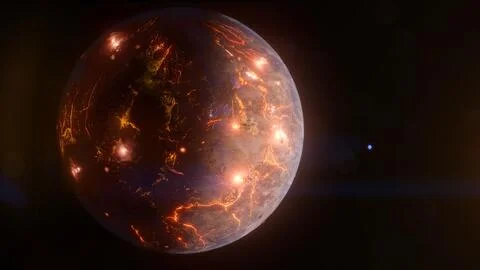Earth-size exoplanet discovered, potentially volcanically active

- Country:
- India
Astronomers have discovered an Earth-size exoplanet, called LP 791-18 d, that may be carpeted with volcanoes and could potentially support life.
The exoplanet, orbiting a small red dwarf star about 90 light-years away in a southern constellation called Crater, could undergo volcanic outbursts as often as Jupiter's moon Io, the most volcanically active body in the solar system, the team of researchers, including those at Center for Astrophysics, Harvard & Smithsonian, US, said.
They found and studied the exoplanet using data from NASA's TESS (Transiting Exoplanet Survey Satellite) and the retired Spitzer Space Telescope, as well as a suite of ground-based observatories.
They have published their findings in the journal Nature.
The team said that the exoplanet, only slightly larger and more massive than Earth, is tidally locked, which meant that the same side constantly faces its star.
While the side facing the star would probably be too hot for liquid water to exist on the surface, the team suspected that the volcanic activity potentially taking place all over the planet could sustain an atmosphere. These conditions, they said, may allow water to condense on the dark side of the planet.
The planet's volcanic activity is being attributed to other planets in the same system, two of which were known to astronomers before LP 791-18 d was discovered, including LP 791-18 c.
During each orbit, planets d and c pass very close to each other. During each close pass, the planet c, being much larger and more massive than d, produces a gravitational tug on the planet d, making its orbit somewhat elliptical.
On this elliptical path, planet d deforms slightly more every time it goes around the star. These deformations can create enough internal friction to substantially heat the planet's interior and produce volcanic activity at its surface. Jupiter and some of its moons affect Io in a similar way.
The team said that planet d sat on the inner edge of the habitable zone, the traditional range of distances from a star where scientists hypothesize liquid water could exist on a planet's surface.
They further said that if the planet was as geologically active as they suspected, it could maintain an atmosphere.
Temperatures could drop enough on the planet's night side for water to condense on the surface, they said.
The team initially estimated the planet's mass by measuring tiny differences in the time it took to orbit its host star from one orbit to the next, caused by the gravitational tug of the other planets in the system.
(This story has not been edited by Devdiscourse staff and is auto-generated from a syndicated feed.)
ALSO READ
Historic Medical Evacuation: NASA's Pioneering Astronaut Mission Cut Short
NASA's First Medical Evacuation from Space
Historic Medical Evacuation: NASA's Swift Response
Astronaut's Early Earth Return Marks NASA's First Medical Evacuation
NASA's First Medical Evacuation from Space: A Milestone in Human Spaceflight










